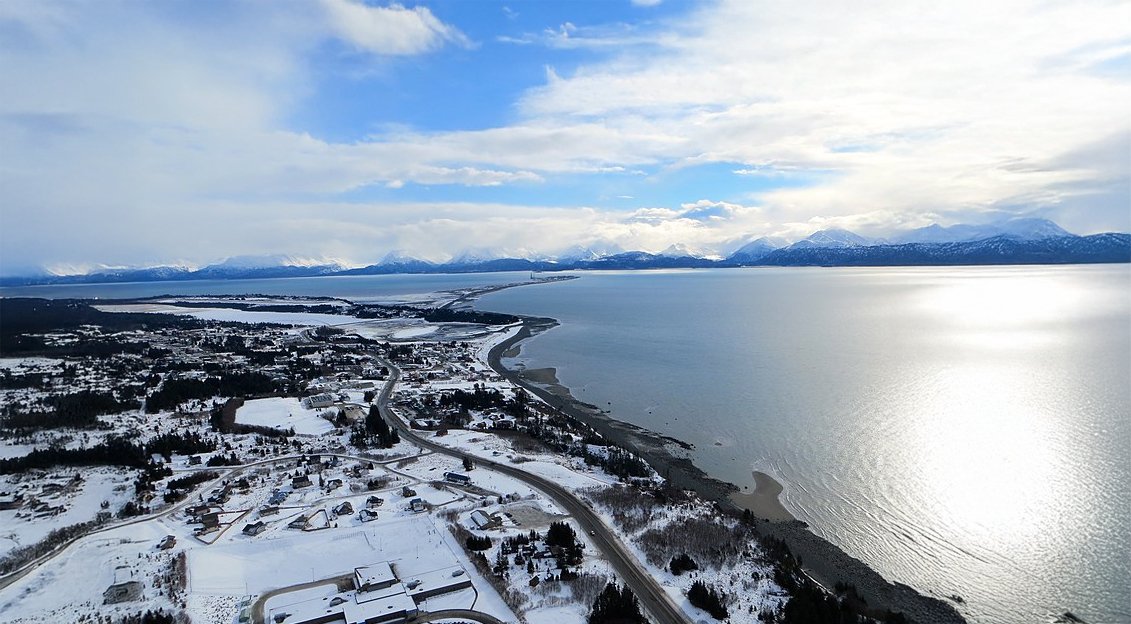
Experience for Homer Electric families
Thank you for being a part of this conversation about our Homer Electric future and for making your voice heard in this election.
I’m Erin McKittrick and building a better future for our kids has been my life’s passion. I’m a scientist, technical analyst, and nonprofit director who’s served you on the Homer Electric Association Board the past six years. I’m a passionate storyteller, and I’ve written three adventure books and one children's book that combine wilderness travel with Alaska’s natural and human history. When I’m not on the job, you can find me building public trails, running through the mountains, and exploring the wilderness with my family.
2025 is a pivotal time for our co-op as we confront the rapid dwindling of our Cook Inlet gas supply. Cook Inlet gas generates 88% of our electricity. We need to build the bridge to a more stable and reliable energy future.
Read on for what I’ve been doing to achieve a stable transition that will protect us from faster rising rates. I’d appreciate your vote and the chance to continue working with you to secure our Homer Electric future
-Erin

BUILDING RESILIENCY
Efficiency
I’ve supported action to upgrade the efficiency of our main gas turbine at the Nikiski station, bringing in a state of the art LM6000 Combustion Turbine that will do more with less.
Home Savings
A new heat pump support program allows homeowners to unlock savings for heating and cooling, avoiding gas price spikes. We’ve also increased the size limits for home solar systems.
Battery Freedom
Our powerful 93MW large battery array is reducing fuel costs and increasing reliability.

Tackling our Gas Crisis
The clock is ticking.
Cook Inlet gas is running out quickly. It provides 88% of our power and is our biggest expense. The main producer will no longer sign new contracts. The remaining Cook Inlet gas is being sold at higher prices, without the supply guarantees we used to have. Imported gas will be more expensive, and its timing is uncertain. It will take years to secure alternative energy supplies and, without proactive and decisive action, our co-op risks unpredictable and higher costs.
Short term stability
In the near term, we’ll need to work with the assets we have, including our gas plants. As imported gas replaces Cook Inlet gas, prices will rise, and timing is uncertain. During this time, everything we can do to increase the efficiency of how we use energy in our homes and businesses will help us save. Local solar is the fastest of all energy sources to build and I support allowing members to save money and energy with distributed solar.
Long term solutions
We’re learning firsthand that we can’t put all our energy eggs in one basket. The next step towards long-term solutions is putting our abundant sun and wind resources to work.
In Alaska, utility-scale solar is cheaper than gas power. It’s the quickest to build, and can reduce our gas use in the summer, saving our scarce Cook Inlet gas for winter heat. Wind is the second quickest, and the winter abundance of wind matches our energy needs in Alaska’s cold and dark. Costs are lower than imported gas, and all future studies of the Railbelt grid have included large amounts of wind generation. One recent study found that the Railbelt could reach 25% wind power before any upgrades to the grid, while an economic analysis from the National Renewable Energy Laboratory showed that the cheapest energy system in 2040 has wind providing 50% of the energy. Hydro takes a long time and costs a lot, but can provide stable baseload power for generations, helping to balance the others. Bradley Lake provides this today, and the state is expanding it through the Dixon Diversion. Cook Inlet has geothermal potential, but it’s too early to know if the economics will pan out. Tidal and nuclear power may become viable in the future.
These projects will help generate tax revenue for local emergency services and schools and income for local landowners. As we build a more stable local energy system, imported gas will continue to provide a significant amount of power.
For me, good process is key to making the right choices. I’ll continue publishing transparent data and analysis about our HEA budget, operations, and options so members and local business owners can be a partner in this conversation. You can visit my Facebook or my Alaska Energy Blog for the latest information.
HOW TO VOTE
All HEA ratepayers have a chance to vote for their next Board of Directors that will guide us through this vital time. Historically, about 20% of members vote in these elections and I’d love to grow that participation. Please ask your friends and neighbors if they’ve voted!
You can vote by mail or online in this election. The co-op’s online voting system is secure, linked specifically to your SmartHub account, and has functioned seamlessly in the past.
Click Here to Vote Online!
Online voting starts Friday, March 28 and you can log into your SmartHub account to vote. Mail ballots will also be sent to members that have requested one online. Voting ends Wednesday, April 30 and your ballot or online vote must be received by that day. You can also vote in person at the HEA annual meeting on May 1st. The meeting will be held at Kenai Central High School.
If you don’t receive a ballot or have any voting questions, you can contact the co-op at this link.
How to Help
Can you help lend a hand to build the local energy future our kids and communities deserve? I’d be grateful for any support large or small!





